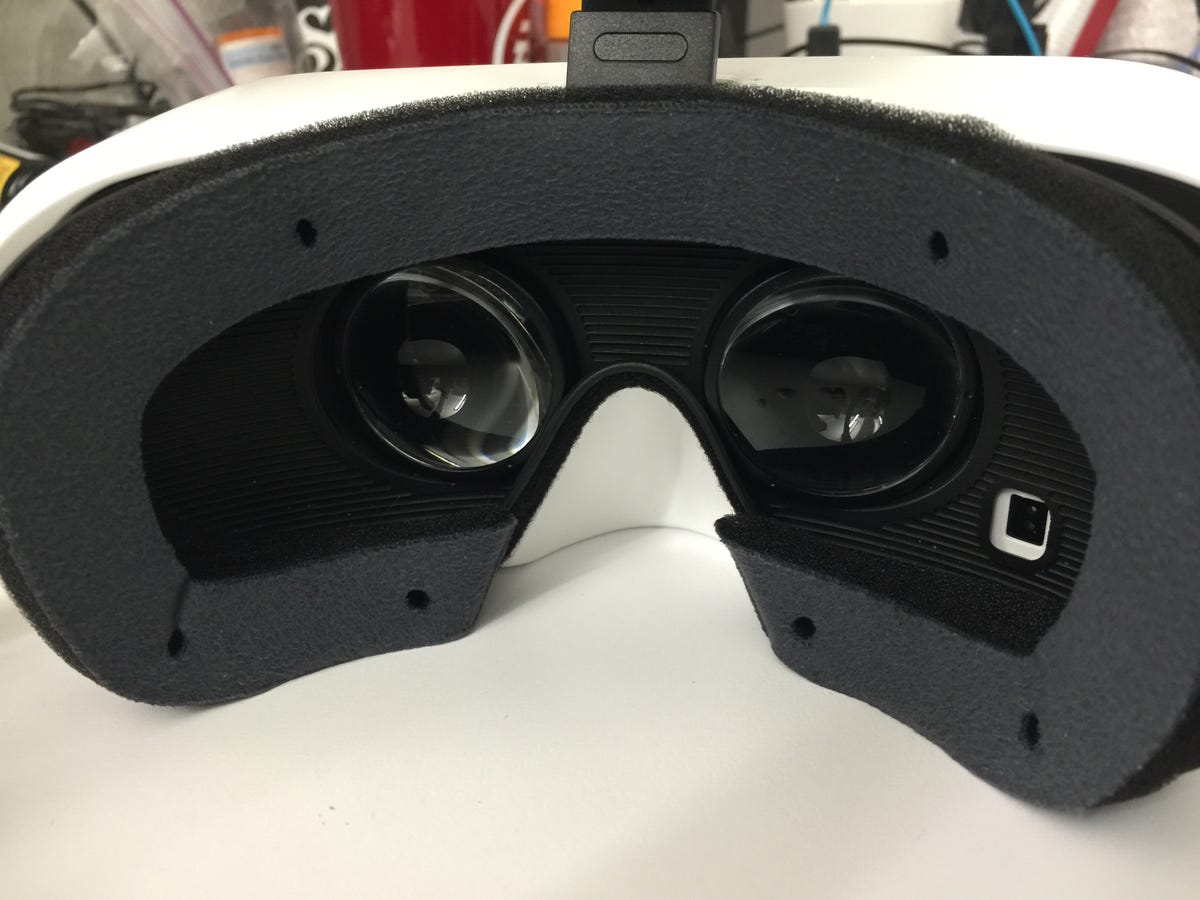
Scott Stein/CNET
Virtual reality and tears don’t mix. It’s soggy, messy. The lenses get smeared, and everything gets damp.
I cried a lot during the 8 minutes of Clouds Over Sidra, a VR documentary made by Gabo Arora and Chris Milk that captures life in a Syrian refugee camp — the Za’atari camp in Jordan — via a 12-year-old girl named Sidra. It’s a project meant to raise awareness of the Syrian Civil War, and millions of displaced Syrians, including over 130,000 at Za’atari. Sidra has been there for 18 months.
At first, I was quietly immersed. Then, I felt a tear well up, blurring the view. Then I was choking back sounds as my wife was next to me reading a book, not realizing I was feeling so overwhelmed. I was a person in a messy apartment in New Jersey, with a virtual reality headset on my weeping face, far removed from Jordan, or Syria.
Even though Clouds over Sidra was released weeks ago, I hadn’t experienced it until now. I tried it via Samsung’s Milk VR app on the Gear VR , a virtual-reality headset that uses the Samsung Note 4 . (It’s also available on iOS and Android via VRSE’s app, and can be played on Google Cardboard.) I started the video up and tried downloading the file, but after a download problem settled for streaming instead. The 3D, 360-degree movie began a bit choppy, but settled down.
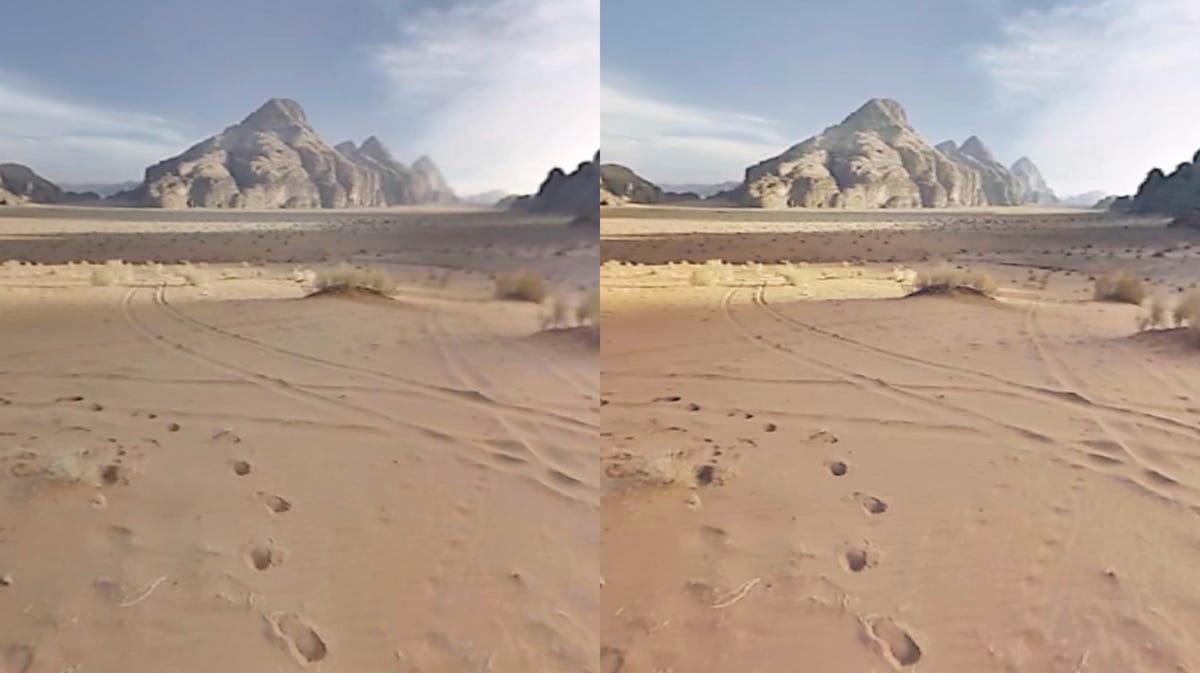

Screenshot by Scott Stein/CNET
Then I was standing in a desert.
Sidra began speaking to me about recent struggles, and her world. She guided me into the camp.
I was in her room. Small, sparse, with a little TV. She sat on her bed, and I stood there, or hovered, a ghost in the film. I looked all around me. I looked at the door, and wondered what was beyond.
Then I was looking down at her family next, in a small, shared space. I was taken to the refugee camp, the gym, a computer room where kids played games, and two boys turned around and waved at me, hugging. I was inches from them.
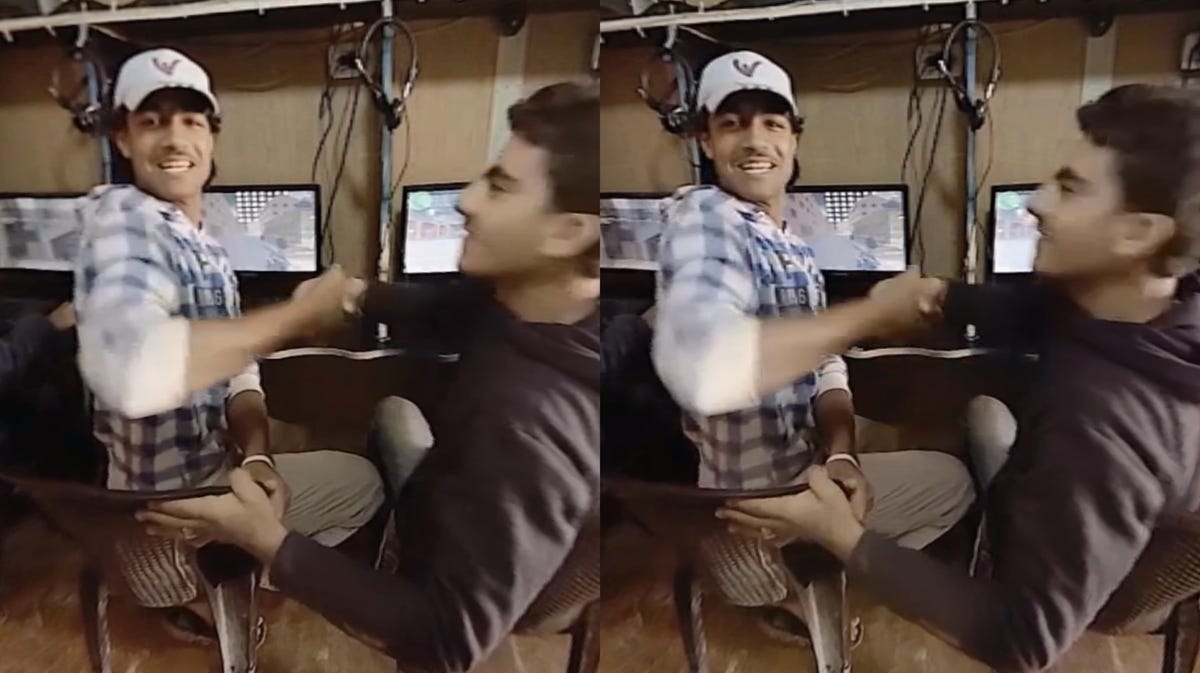

Screenshot by Scott Stein/CNET
Girls played soccer, and I stood in the middle of the field. I watched kids walking in a line, and they turned to stare — at the me, or the camera, but it felt like they were looking at me.
Kids even gathered in a circle around me. I turned in all directions and saw them. At this point my fog of tears had gotten too heavy, the Oculus lens smearing, humidity fogging the scene like a dream. And random hiccups of streaming noise. Sometimes, the 3D view split up as I turned, the image breaking. All of these bits didn’t remove me from the scene. I was enveloped.
I tried watching again, days later, at my desk. I was there again. And I cried again.
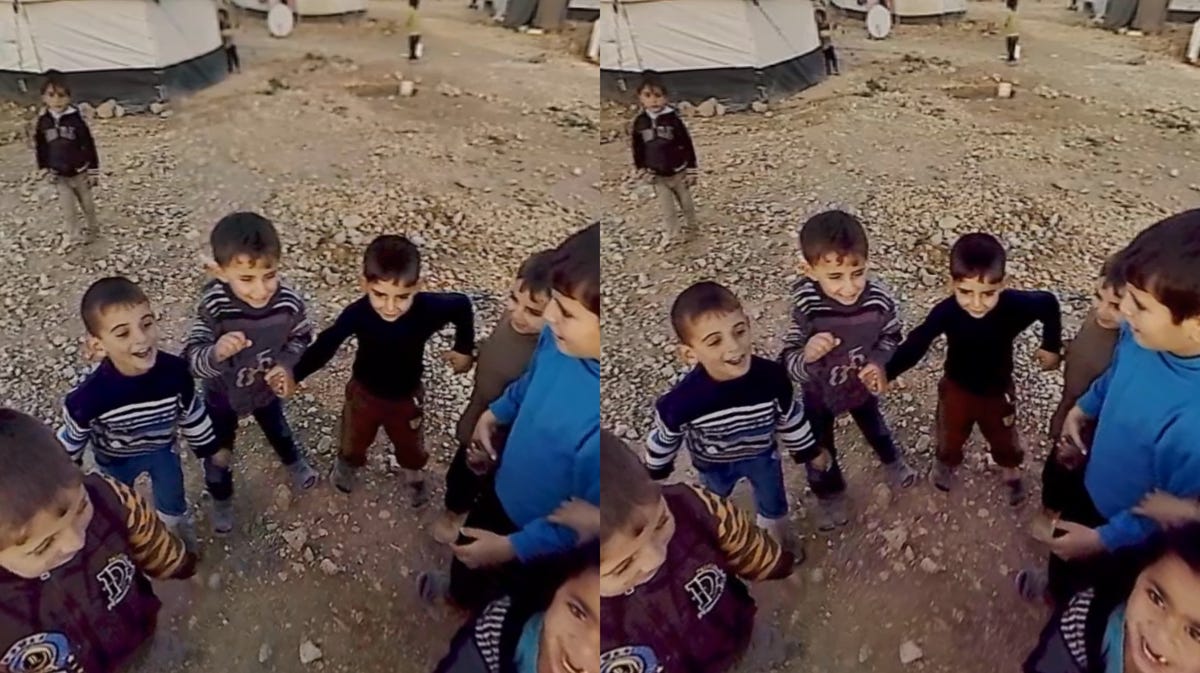

Screenshot by Scott Stein/CNET
The power of virtual reality filmmaking, if it’s anything like what Clouds Over Sidra demonstrates, is utterly overwhelming. It’s not just about gaining perspective, but the beginnings of true telepresence. The spherical cameras captured everything, in full 3D. Each scene was a living panorama, a place to silently observe and study. It reminded me of William Gibson’s recent book The Peripheral. To feel like you’re in a place where you really aren’t, but share the emotions and connections…yes, it’s magic, and ghostly, and unreal. And I’m not even sure what it fully means yet. Unlike games or trips to distant galaxies, or swims under the ocean, Clouds Over Sidra is a virtual reality trip into a very distant, but very gritty, reality.
This type of transporting emotional power could be a massive tool for generating empathy. It could also be a tool for emotional manipulation. It could do many powerful things. And it took this documentary to make me realize the pull of virtual experiences, and what could be coming next.
I took off the Gear VR headset. My eyes were red, wet. My wife was sitting next to me on the sofa, reading a book. My glasses rested next to my MacBook. Outside, it was a snowy day in New Jersey. Sidra was far away. The headset was a mess, foam soaked, salty tears everywhere. I wiped the headset down, grabbed some tissues. I blinked, wiped my eyes, felt a little bit alone. Emotionally vulnerable. Wondering what I should do.
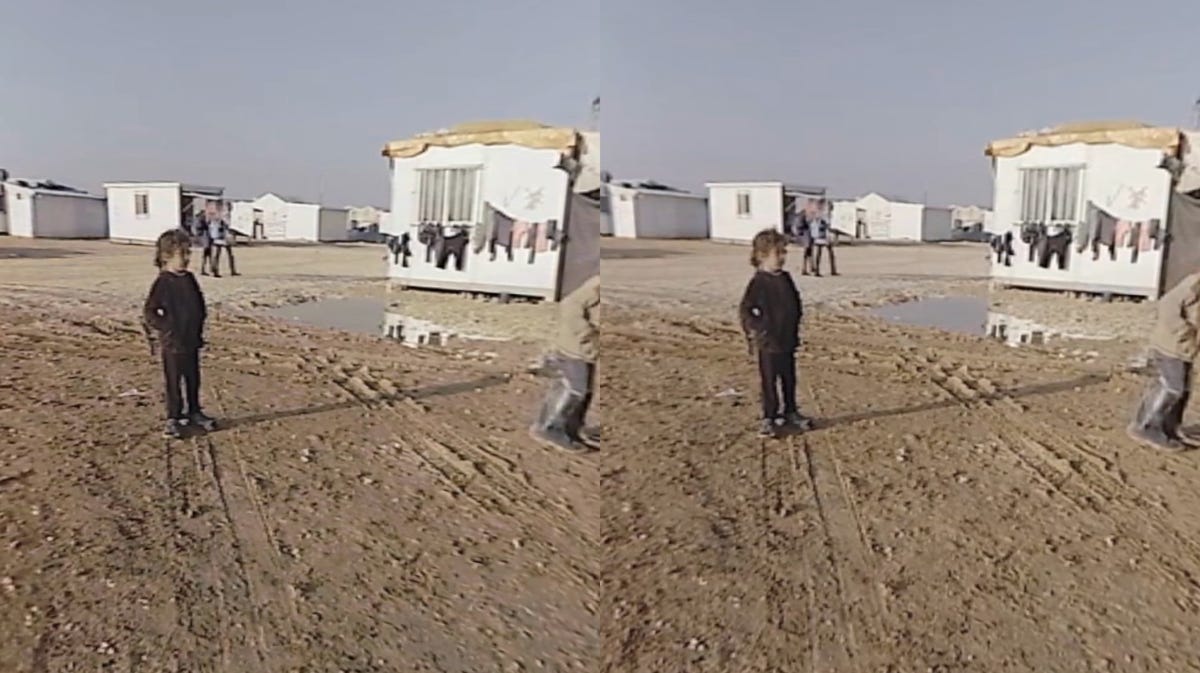

Screenshot by Scott Stein/CNET
I kept thinking of the kids.
Clouds Over Sidra is available on VRSE, an app on iOS and Android, and Oculus’ Milk VR. You should watch it.



